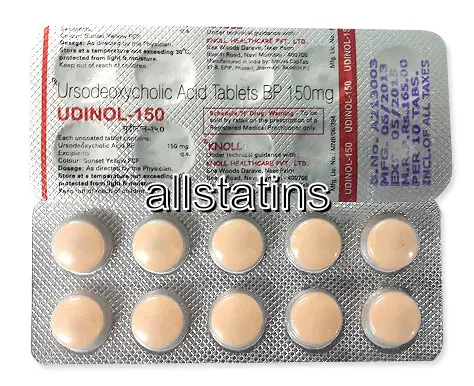Buy Ursodeoxycholic Acid Online in the USA at All Statins
| Package | Dosage | Price | Price per Dose | |
|---|---|---|---|---|
| Dosage: 300mg | ||||
| 180 pill | 300mg | $984.89 | $5.47 | |
| 120 pill | 300mg | $670.94 | $5.60 | |
| 90 pill | 300mg | $523.83 | $5.81 | |
| 60 pill | 300mg | $374.93 | $6.24 | |
| 30 pill | 300mg | $227.82 | $7.57 | |

Ursodeoxycholic Acid Description
Introduction to Ursodeoxycholic Acid
Ursodeoxycholic acid is a naturally occurring bile acid that has been used in medical treatments for many years. It is commonly prescribed to manage certain liver and gallbladder conditions. This medication works by modifying the composition of bile, helping to improve liver function and facilitate the dissolution of cholesterol gallstones. Its popularity stems from its effectiveness and generally favorable safety profile, but like all medications, it carries some considerations that users should be aware of.
Mechanism of Action
The primary action of ursodeoxycholic acid involves reducing the concentration of harmful cholesterol in bile. It promotes the breakdown and absorption of cholesterol, preventing the formation of new gallstones and aiding in dissolving existing ones. Additionally, it stabilizes liver cell membranes, which can help diminish liver enzyme levels in patients with certain liver diseases. Its anti-inflammatory properties also contribute to reducing liver injury in some cases.
Uses and Indications
Ursodeoxycholic acid is mainly prescribed for the dissolution of cholesterol gallstones in patients who are not suitable candidates for surgery. It is also used to treat primary biliary cholangitis, a chronic disease that damages the small bile ducts in the liver. In some cases, it helps improve liver enzyme levels and slow the progression of liver fibrosis. It can be part of a long-term management strategy, especially where surgical intervention is not preferred or feasible.
Effectiveness and Patient Feedback
Many patients report positive outcomes with ursodeoxycholic acid. Its ability to gradually dissolve cholesterol gallstones often results in the avoidance of surgical procedures. Patients generally experience symptom relief and improved liver function over time. However, the rate of success varies depending on the size and composition of the stones, as well as adherence to the prescribed regimen. In clinical practice, some patients notice significant improvement within months, while others may require extended treatment periods. It is important to follow medical advice closely to maximize benefits and minimize potential complications.
Potential Side Effects and Safety
Most users tolerate ursodeoxycholic acid well, but some may experience side effects. Common issues include diarrhea, nausea, and stomach upset. Rare adverse reactions can involve allergic responses or increased liver enzymes, which require medical attention. Long-term use should be monitored by healthcare providers to ensure liver function remains stable. As with any medication, there is a possibility of interactions with other drugs, so it is crucial to disclose all current treatments to your healthcare provider before starting ursodeoxycholic acid.
Precautions and Recommendations
Before beginning treatment with ursodeoxycholic acid, patients should have a thorough medical evaluation. It is particularly important to assess liver function and the nature of gallstones to determine if the medication is appropriate. Pregnant or breastfeeding women should consult their doctor to weigh the potential benefits against risks. Regular monitoring during therapy helps detect any adverse effects early. Patients are advised to adhere strictly to dosage instructions and attend follow-up appointments to evaluate treatment progress and make adjustments if necessary.
Conclusion
Ursodeoxycholic acid remains a valuable option for those with cholesterol gallstones and certain liver diseases. Its ability to dissolve stones and support liver health offers an effective alternative to more invasive procedures. With proper medical supervision, most users experience meaningful benefits while minimizing risks. As with any treatment, individual responses may vary, and ongoing communication with healthcare professionals is essential to achieve optimal outcomes.